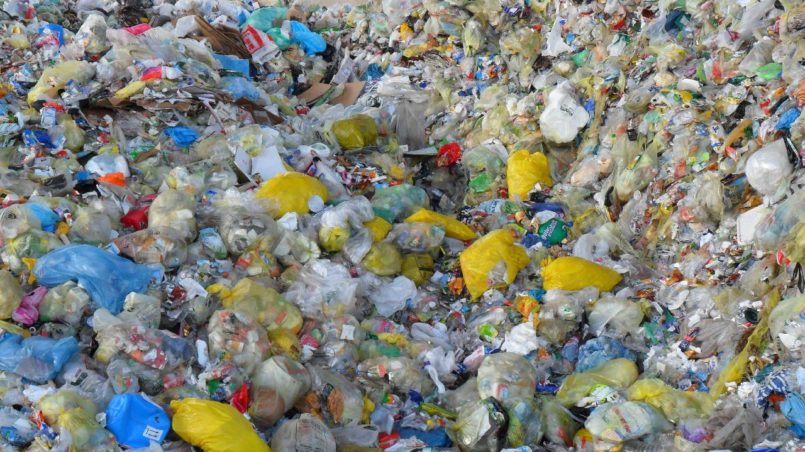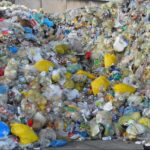New Awareness of Energy – The Plastic Flood

In this article I would like to discuss the plastic problem of our time. As already described in the last part of the series “petrol industry” we have been able to produce a large number of plastics that are indispensable in today’s life.
Plastic makes the world go round
Plastics are used today in all forms and product categories. The computer (a notebook) with which I am writing these lines, consists largely of it.
This is only a small (!) excerpt from the various applications of the numerous kinds of plastics available on the market. For further information on plastic I recommend this Greenpeace Link.
This equals a plastic mountain of about 35 Cheops pyramids, which are released to the market every year.
Exact figures do not yet exist, but the little information available suggests catastrophic recycling rates. For example, only 1% of the produced styrofoam is recycled!
The rubbish problem
According to the latest research findings, globally there are about 150 million tonnes of plastic waste in our seas.What is particularly fatal about this development, is the fact that synthetic materials, as the name implies, are not natural chemical compounds.
In the seas, the plastics do not decompose, but undergo a kind of weathering and pulverization. The plastic is thus distributed more and more quickly, and so has fatal consequences for life in this important living space.
Our daily poison
Plastics are a cocktail of different substances. Among other things, bisphenol A, which is used as a softening agent, has been receiving attention. It has hormone-like properties which influence the metabolism, as well as the reproductive capacity of humans and animals.
Hormone-like substances are called “endocrine disruptors“. These findings are still so new that today a scientific dispute about their effects has flared up.
In the sea, we are partly dealing with gigantic streams of powdered plastic, which is exposed to temperature fluctuations, mechanical/chemical effects, and above all, UV light.
In the meantime, they have become part of the food chain unintentionally, because they are absorbed by micro-organisms such as plankton and krill as well as fish, aquatic mammals and birds. Larger animals, in particular, frequently confuse these remnants with food, and die an agonizing death, since the plastic blocks the digestive system.
There is a certain irony in us eating our own garbage. For me, this is one of the best examples of “illiteracy” – that as a result of our “glass dome life” we are not even aware of one of the simplest laws of nature, the “cause-and-effect” principle.
Ways out of the plastic world
It will not suffice to dispense with conventional plastic. The situation is so dangerous that we have to look for ways to reduce the plastic already present in the oceans.
Plastic as raw material – The pyrolysis
Since plastics are made from petroleum, a conversion back to oil is technically not a difficult undertaking. With oxygen removal and several hundred degrees Celsius, short-chain oils can be produced from the long-chain plastic molecules.
The principle is so simple, that there could even be pyrolysis household appliances that are barely larger than 2-3 rice cookers.
The oil obtained in this way can, in turn, be used as starting material for other plastics, or as mentioned above, as propellants, although in this case the carbon footprint, of course, can only be negative. The plastic waste can also be shredded and molten for further processing into building materials.
Alternatives to plastic – bioplastics
Since, as already mentioned in earlier articles, crude oil is, or rather used to be, basically nothing but biomass, the production of biopolymers is just as possible from renewable sources.
The first generation of bioplastics is based on plant starch. It is used for things such as packaging materials, dishes, drinking bottles and shopping bags. Unfortunately, as in the case of first-generation biofuels, there is also the conflict between plastic and food production.
The second approaching generation of bioplastics is made from biomass. Here as well, as starting material e.g. leftovers from sewage treatment plants are in the developers’ focus. Researchers around the world are confident that in the future plastics from renewable biomass can be produced on a large scale.
Mercedes is currently working on a plastic replacement made from castor oil, which is e.g. used for car dashboards. Continental also works on car tires made of dandelion rubber, a virtually endlessly renewable raw material.
Algae plastic is another promising way to produce plastic from plants that are not in competition with food production.
At this point, I would like to point out the film “Plastic Planet” by Werner Boote (some of which is slightly inaccurately researched, but still revealing the extent of the problem). “Arte”, as well, has dealt with the subject, in the documentary “Plastik – a long-term problem“.
In the next article, I would like to discuss new developments in the field of “renewable energies”, and show which principles of energy generation, some of them amazingly simple and all harmonious with nature, will hopefully soon be applied.
Translation into English: Serena Nebo
Credits
| Image | Title | Author | License |
|---|---|---|---|
 |
Plastics | Thomas Kohler | CC BY 2.0 |
